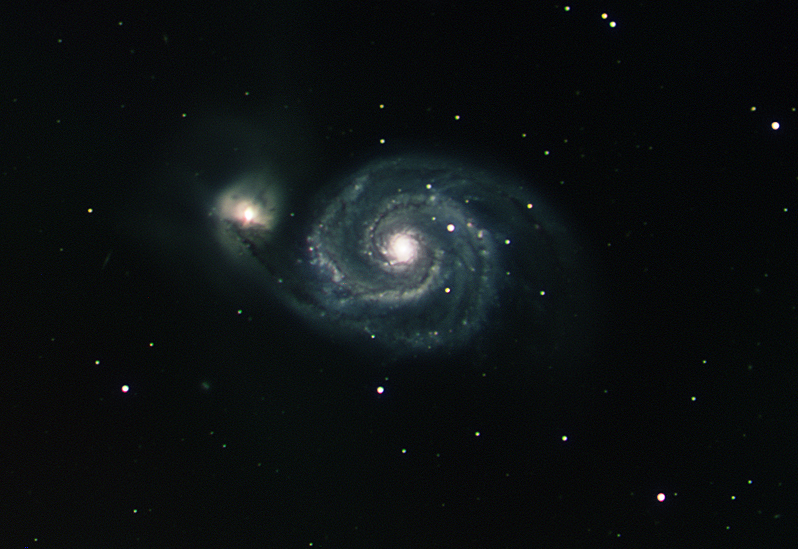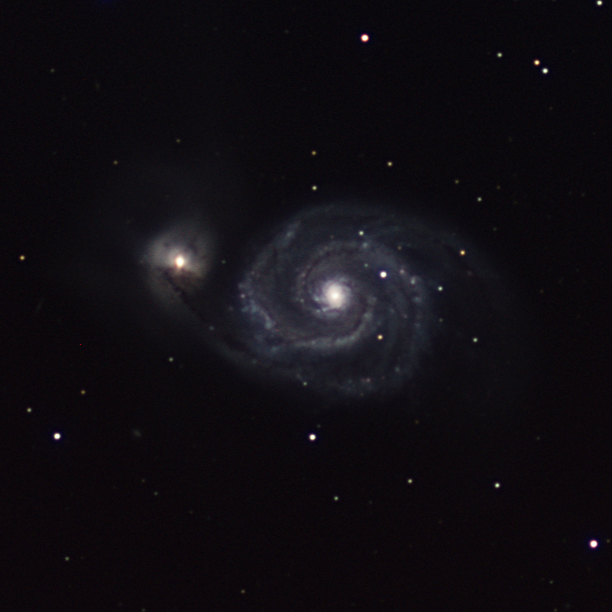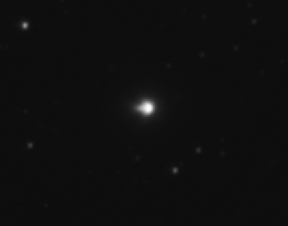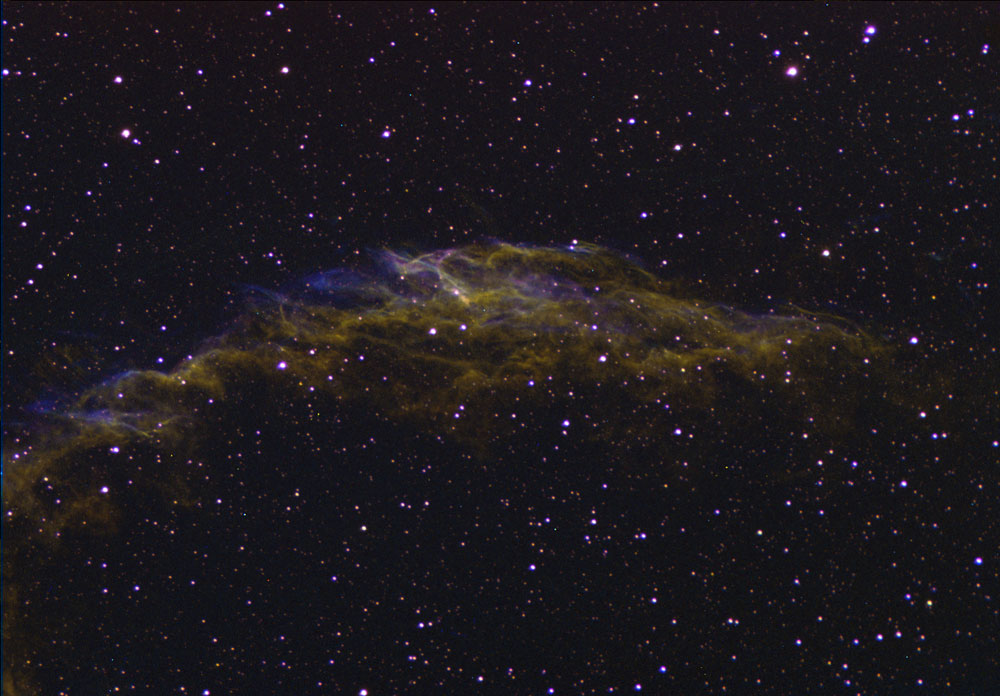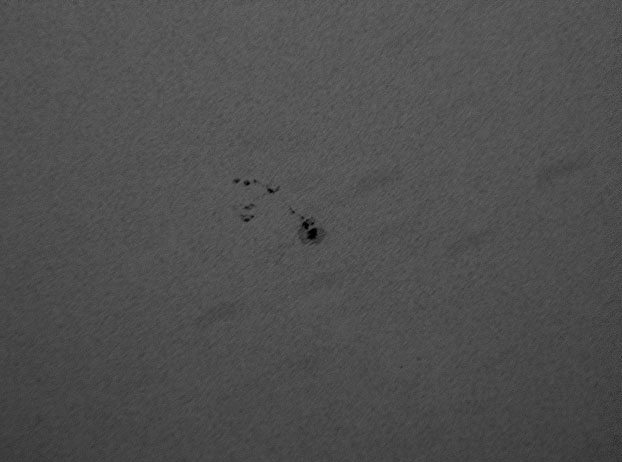Markarians Chain is a group of galaxies on the Virgo / Coma Berenices border. It’s a huge area of sky with hundreds of galaxies in it.
I thought it might be fun to do a multi year project to image to area. To start I’m planning on just taking quick overlapping images and registering them together to give me the final field of view that I’m aiming for. Then I can spend more time capturing better quality data and adding that to the initial file, which will improve the signal to noise ratio and enable better processing and more detail.
I might even add some colour data and Ha.
I counted at least 45 galaxies and that with just 30 minutes of exposure per pane – there are 5 panes in this image, damn the clocks going forward 🙁 It’s quite a large image so click on it!

